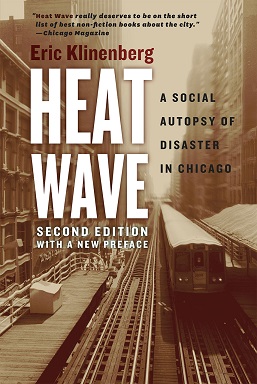Heat Wave
Below follows a brief excerpt from “Heat Wave,” Chicago magazine’s excellent, comprehensive oral history of the week of record-breaking temperatures in July 1995 that killed more than 700 people, became one of the nation’s worst disasters, and left a legacy of unanswered questions about how civic, social, and medical respondents were ill-equipped and unable to contend with trauma on such a scale.
***
Mark Cichon, emergency room physician at Chicago Osteopathic Hospital
I remember talking to friends at other hospitals who said, “Man, we’re in the middle of a crisis mode.” It was across the city. Our waiting room and the emergency departments were packed. We were going from one emergency to another, all bunched together, almost like a pit crew. The most severe cases were the patients with asthma who were so far into an attack we couldn’t resuscitate them. I remember a woman in her early 30s. The paramedics had already put a tube into her lungs. We were trying to turn her around, but there was nothing that could be done.
Eric Klinenberg, sociologist and author of the 2002 book Heat Wave: A Social Autopsy of Disaster in Chicago (to the Chicago Tribune in July 2012)
[Fire officials] did not call in additional ambulances and paramedics, even though the wait times for people needing help were long.
Raymond Orozco, commissioner of the Chicago Fire Department (at an Illinois Senate hearing in late July 1995)
Nobody indicated that we needed more personnel or supplies. Our field supervisors told us, “We’re holding our own.” We needed something to trigger the mechanism. Nobody pulled the trigger.
***
Klinenberg, who offers a line of commentary in the piece, explored those days in depth in his classic work of sociology, Heat Wave: A Social Autopsy of Disaster in Chicago, a second edition of which just published this past May, including a new preface by Klinenberg that situates climate change at the center of untenable weather events in urban centers and pushes for changes in infrastructure, rather than post-disaster responses. You can read more about the book here.
